 Early
Sunday morning brought us back to the Eastern Shore of Virginia National
Wildlife Refuge where we were greeted by another spectacular sky.
Early
Sunday morning brought us back to the Eastern Shore of Virginia National
Wildlife Refuge where we were greeted by another spectacular sky.  Early
Sunday morning brought us back to the Eastern Shore of Virginia National
Wildlife Refuge where we were greeted by another spectacular sky.
Early
Sunday morning brought us back to the Eastern Shore of Virginia National
Wildlife Refuge where we were greeted by another spectacular sky.
As we walked through the refuge, we saw yellow-shafted flickers pass overhead and several raptors including Cooper's and broad-winged hawks. We paused to watch an osprey attempting to catch a fish in a small pond. It was successful on its third attempt and we watched it dine on its meal. We passed double-crested cormorants and egrets while we were making our way to a World War II era bunker. This was one of two that had once held 16 inch guns for the protection of the Hamptons Road area. Now, the top of the tower had been converted to a viewing area and we climbed to the top. From this vantage point, we heard the rattle of a belted kingfisher as we watched it pass us. We also saw several small songbirds, but were unable to identify most.
Huge flocks of swallows swirled around us. One was not so fortunate, as we watched a Cooper's hawk fly over the flock and then swoop down and grab one in its talons. It was a truly thrilling to watch this raptor in action.
Later that morning, we went on one of the Festival's habitat hikes at
Kiptopeke State Park. Once again, the scenery was magnificent. Instead
of birds, we started out with insects and other bugs. We saw butterflies,
dragonflies, and a brown praying mantis. I noticed a long thread that was
holding a spider web across the trail. Someone traced the thread back to
the web and then found a tiny spider in the center of the web. I had never
seen anything like it. The spider had a hard center with six little spikes
or spines projecting from it. The naturalist said that this was a rare
tropical species that he had discovered in Virginia. It had only been found
at four sites previously, and this was now the fifth. A little later, we
came across another one. 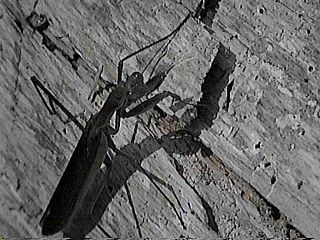
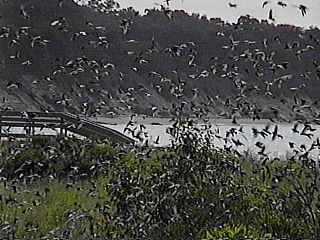 And
then there were the swallows. I had seen large flocks of
tree swallows at previously at Cape May, New Jersey and the day before
at Fisherman Island National Wildlife Refuge. But I had never seen anything
like this. Huge flocks swirling overhead, then a mass of seeming synchronized
confusion swooping and rising, again and again. Suddenly, they formed a
vortex and descended upon some bayberries. Unbelievable! The swirling around
the bayberries was repeated several times. I was puzzled by this behavior,
but Peterson's Field Guide stated that in addition to insects, tree
swallows ate bayberries. The size of the flocks amazed us. Later on, we
heard reports that the hawk counters (reliably) estimated that there were
more than one million tree swallows in the Cape Charles area staging for
migration.
And
then there were the swallows. I had seen large flocks of
tree swallows at previously at Cape May, New Jersey and the day before
at Fisherman Island National Wildlife Refuge. But I had never seen anything
like this. Huge flocks swirling overhead, then a mass of seeming synchronized
confusion swooping and rising, again and again. Suddenly, they formed a
vortex and descended upon some bayberries. Unbelievable! The swirling around
the bayberries was repeated several times. I was puzzled by this behavior,
but Peterson's Field Guide stated that in addition to insects, tree
swallows ate bayberries. The size of the flocks amazed us. Later on, we
heard reports that the hawk counters (reliably) estimated that there were
more than one million tree swallows in the Cape Charles area staging for
migration.
Although we did not stay at the hawk watch platform at Kiptopeke State Park, we did observe several species of birds of prey including broad-winged, Cooper's, and red-tailed hawks; turkey vulture, merlin, and northern harrier. A flock of four soaring black vultures was a nice addition to the raptor sightings. Again songbirds were in short supply, but we were able to locate a Carolina wren after hearing it sing for a while. The shore brought us brown pelicans, great blue heron, Forster's terns, and willets. After the park, we returned to the hotel where we grabbed a quick lunch at the refreshment stands and were fortunate enough to sight a peregrine falcon.
In the afternoon, we did not go on one of the Festival's scheduled events, but drove north on our own for a little while and stepped back into the past in the small town of Oyster. The piles of crushed shells attested to how aptly the town was named. The slowdown in the fishing industry has apparently brought economic hardship to Oyster and, hopefully, it will gain from the benefits of ecotourism that the Festival is promoting. One of our Prodigy friends had mentioned, to our surprise, that there was cotton growing in the area. We had not thought that it could be grown commercially so far north, but saw many cotton fields in the area.
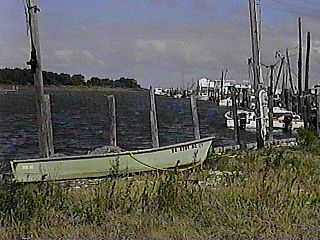
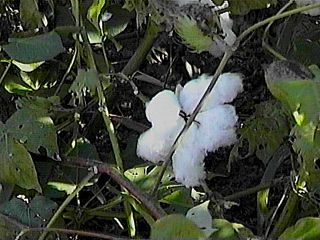
As we drove down a narrow street, we stopped to watch some ruddy turnstones
in a parking lot. At the end of the road, we came upon two birders who
were intently studying a mixed flock of birds. These included more turnstones
and willets, greater yellowlegs, and a single black-bellied plover. But
the best birds in the group were the marbled godwits. Later, we chuckled
as a snowy egret tried to stake out a claim on a sunken boat.

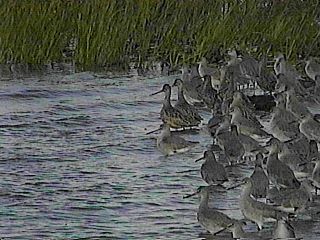
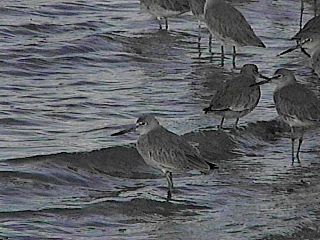
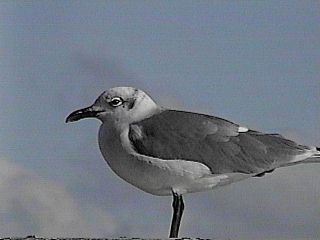
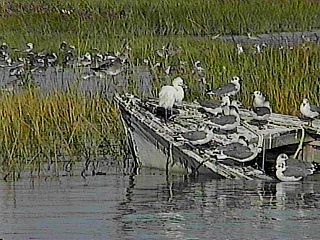
For dinner that night, we tried Sting Rays Restaurant. It had been recommended by several local people as the best restaurant in the area. We were warned not to be turned off by the looks of the place since it looked like a truck stop (and indeed it was). We tried an assortment of dishes and found them all to be good. Not the hautest of cuisine, but good, solid, honest cooking. From then on, I ate every meal at this restaurant. Highly recommended.
Your comments and suggestions
will be appreciated.
Copyright ©
1996 Richard L. Becker